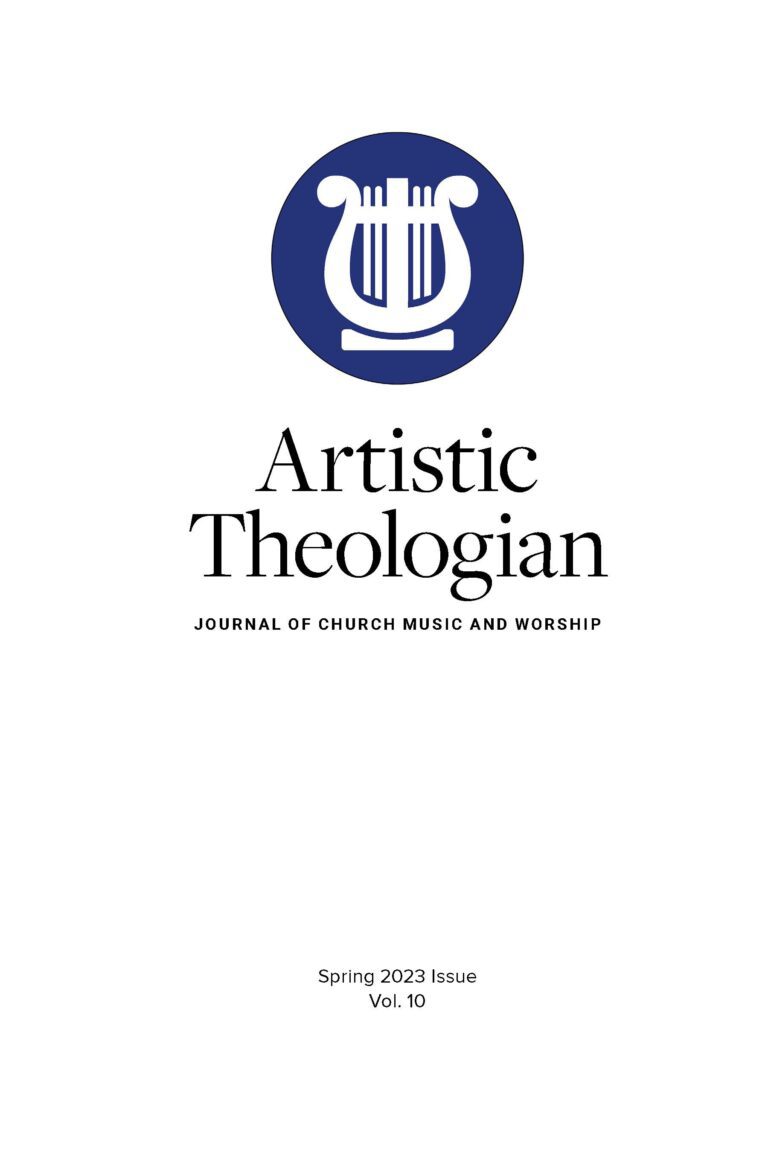
Crider, Joseph R. Scripture-Guided Worship: A Call to Pastors and Worship Leaders. Fort Worth: Seminary Hill Press, 2021. 234 pp. $12.99.
In the growing, cross-disciplinary field of the theology of worship, Joseph Crider has provided a rich resource that draws from many of the current voices in the field while remaining anchored firmly on the titular Scriptures. Crider serves as dean and professor of church music and worship in the School of Church Music and Worship at Southwestern Baptist Theological Seminary. Before this position, Crider taught at the Southern Baptist Theological Seminary, Liberty University, Southwest Baptist University, and Westmont College. He has also served on staff with local churches. In Scripture-Guided Worship, Crider often references his own experiences and admits the ways in which he has needed to learn the principles he outlines in the book. He occasionally even phrases warnings as if addressing his younger self, desiring to cultivate wisdom especially for younger worship leaders.
In the introduction, Crider establishes the guiding metaphor for the book—the story of David’s grand worship experience bringing the Ark of the Covenant back to Jerusalem in an extravagant procession, with the aid of 3,000 young men. This particular story ends in the death of one of these men, Uzzah, as the cart carrying the Ark hits a “pothole” and Uzzah reaches out his hand to steady the Ark. David then leaves the Ark at Obed-edom without continuing to Jerusalem. Crider utilizes this metaphor well throughout the text, stretching it without breaking, and it bears the weight of his many applications. If David had moved the Ark according to God’s Word, as opposed to the pragmatic cart of the Philistines, the deadly consequences would have been avoided.
In Chapters 1–4 of Scripture-Guided Worship, Crider diagnoses current evangelical worship practices, or “worship on the cart of experience.” As Crider describes contemporary worship, the many non-denominational churches that fill the gaps between Baptist and Charismatic/Pentecostal denominations are frequently in view. Crafting a book for worship leaders with life-and-death stakes is wholly appropriate, and a helpful reminder of the formative power of liturgy. He uses these beginning chapters to make the dangers clear by describing ten potholes and their potential implications for leaders and their congregations. Almost hidden among his observations is Crider’s definition of worship: “[God] initiates the rhythm by revealing Himself to His redeemed. The redeemed receive His revelation by faith and then respond to Him, acknowledging His infinite glory and perfection through Jesus Christ in the power of the Holy Spirit” (22–23). This definition undergirds the next section of the book.
Chapters 5–12 consist of Crider’s seven rhythms of biblical worship. These biblical-theological “poles” are culled from many of the outstanding resources from the bibliography, highlighting the work of Bryan Chappell, Ron Man, Allen P. Ross, Mike Cosper, Constance Cherry, Lester Ruth, and others. Even as he draws from so many important theologians, Crider’s seven rhythms are defined by the Word. While describing the rhythm of revelation and response, Crider boldly states, “Wordless worship leads to Christ-less worship, which leads to Spirit-less worship” (83). This conviction drives the passion with which Crider implores pastors and worship leaders to let Scripture inform how we plan worship gatherings.
Chapters 13–16 present Crider’s application of the rhythms in ways that avoid the potholes outlined in the opening chapters. Crider reiterates several principles of Scripture-guided worship planning and claims, “Scripture-guided worship is the most effective design strategy in providing a biblical framework and an apologetic for every element in the corporate gathering” (155). Crider moves quickly to examples from his own ministry with outlines from two Sunday morning liturgies and explanatory comments to lay bare the Scripture-guided methodology at work. His examples demonstrate the effectiveness of the method and show the ability of Scripture to shape each element of corporate worship.
Crider writes for leaders in the broadly evangelical churches that saturate the United States, which includes Southern Baptists, among whom he currently serves. The subtitle directly addresses “pastors” and “worship leaders.” However, this work may have a limited audience because of the scope of Crider’s observations and applications. The experiences of the global church are not universally encumbered by technology, pragmatism, or the experiential models that Crider critiques. The Scripture-guided method should still be applicable, but Crider is most concerned with addressing worship leaders in western, evangelical contexts.
Scripture-Guided Worship is an outstanding synthesis of current work being done in theology of worship, with a rich interaction with theologians and scholars of liturgy, church history, and worship. This work has a robust bibliography as well as valuable appendixes and indexes. Crider has done important observational work, insightfully describing “modern worship” in evangelical churches in the United States, and he has given an impassioned call for a way forward by removing corporate worship from the cart of experience and placing it on the balanced poles of Scripture-guided worship. I commend this book to all students of worship planning, especially interns or volunteers who are in a position to apply the principles from Scripture-Guided Worship or engage in conversation with pastors or mentors using the discussion questions in each chapter.





